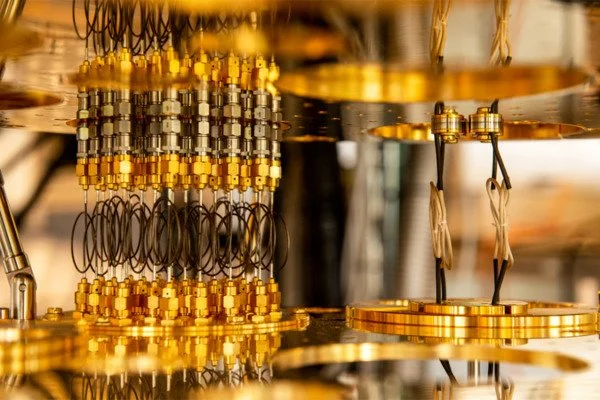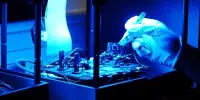Scientists devised and tested a new tool for measuring entanglement in many-body systems in experiments. The method allows for the investigation of hitherto inaccessible physical phenomena and may aid in the understanding of quantum materials.
Entanglement is a quantum phenomena in which the properties of two or more particles become intertwined to the point where each individual particle can no longer be assigned a defined state. Rather, we must consider all particles that are in the same condition at the same time. The entanglement of particles ultimately defines a material’s characteristics.
“Entanglement of many particles is the feature that makes the difference,” emphasizes Christian Kokail, one of the first authors of the paper now published in Nature. “At the same time, however, it is very difficult to determine.”
We developed a more efficient description that allows us to extract entanglement information from the system with drastically fewer measurements.
Rick van Bijnen
The researchers, lead by Peter Zoller of the University of Innsbruck and the Institute of Quantum Optics and Quantum Information (IQOQI) of the Austrian Academy of Sciences (AW), have developed a novel method for studying and interpreting entanglement in quantum materials. To naively describe huge quantum systems and extract information on existing entanglement, one would need to perform an absurdly enormous number of experiments.
“We developed a more efficient description that allows us to extract entanglement information from the system with drastically fewer measurements,” explains theoretical physicist Rick van Bijnen.
The scientists replicated a real substance in an ion trap quantum simulator with 51 particles by reproducing it particle by particle and examining it in a controlled laboratory environment. Few research groups in the world have the essential particle control as the Innsbruck experimental physicists lead by Christian Roos and Rainer Blatt. “The main technical challenge we face here is how to maintain low error rates while controlling 51 ions trapped in our trap and ensuring the feasibility of individual qubit control and readout,” Manoj Joshi, an experimenter, explains.
In the process, the scientists witnessed for the first time effects in the experiment that had previously only been described theoretically. “Here we have combined knowledge and methods that we have painstakingly worked out together over the past years. It’s impressive to see that you can do these things with the resources available today,” says an excited Christian Kokail, who recently joined the Institute for Theoretical Atomic Molecular and Optical Physics at Harvard.

Shortcut via temperature profiles
In a quantum material, particles can be more or less strongly entangled. Measurements on a strongly entangled particle yield only random results. If the results of the measurements fluctuate very much – i.e., if they are purely random — then scientists refer to this as “hot.” If the probability of a certain result increases, it is a “cold” quantum object. Only the measurement of all entangled objects reveals the exact state. In systems consisting of very many particles, the effort for the measurement increases enormously. Quantum field theory has predicted that subregions of a system of many entangled particles can be assigned a temperature profile. These profiles can be used to derive the degree of entanglement of the particles.
These temperature profiles are determined in the Innsbruck quantum simulator via a feedback loop between a computer and the quantum system, with the computer constantly creating new profiles and comparing them to the actual measurements in the experiment. The temperature profiles acquired by the researchers demonstrate that particles that interact heavily with the environment are “hot” and those that interact little are “cold.” “This is exactly in line with expectations that entanglement is particularly large where the interaction between particles is strong,” Christian Kokail, a particle physics professor, said.
Opening doors to new areas of physics
“Our methods provide a powerful tool for studying large-scale entanglement in correlated quantum matter. This allows for the investigation of a new class of physical events using quantum simulators that are already available today,” explains quantum genius Peter Zoller. “With classical computers, such simulations can no longer be computed with reasonable effort.” Innsbruck approaches will also be used to test novel concepts on such platforms.
















